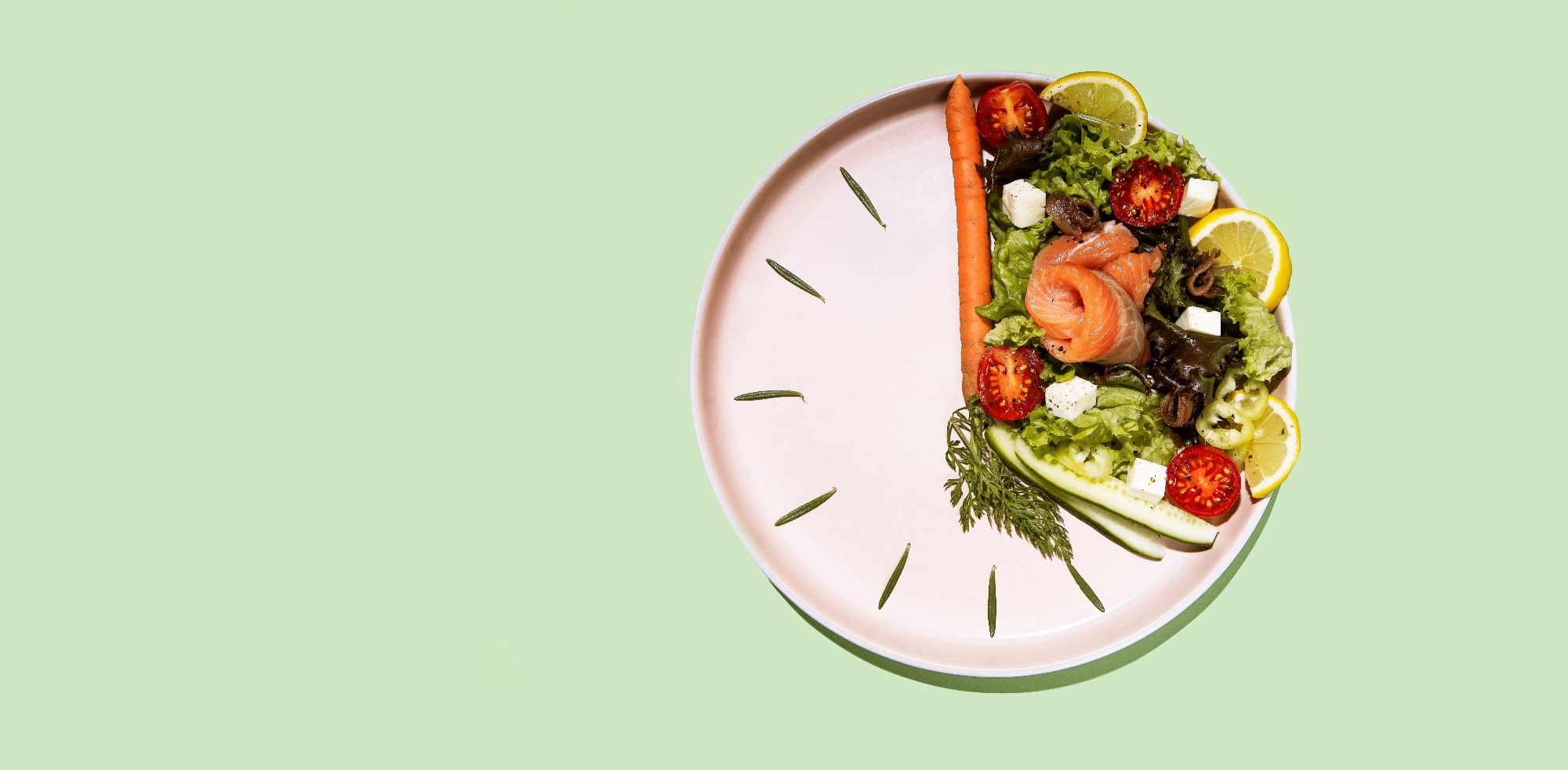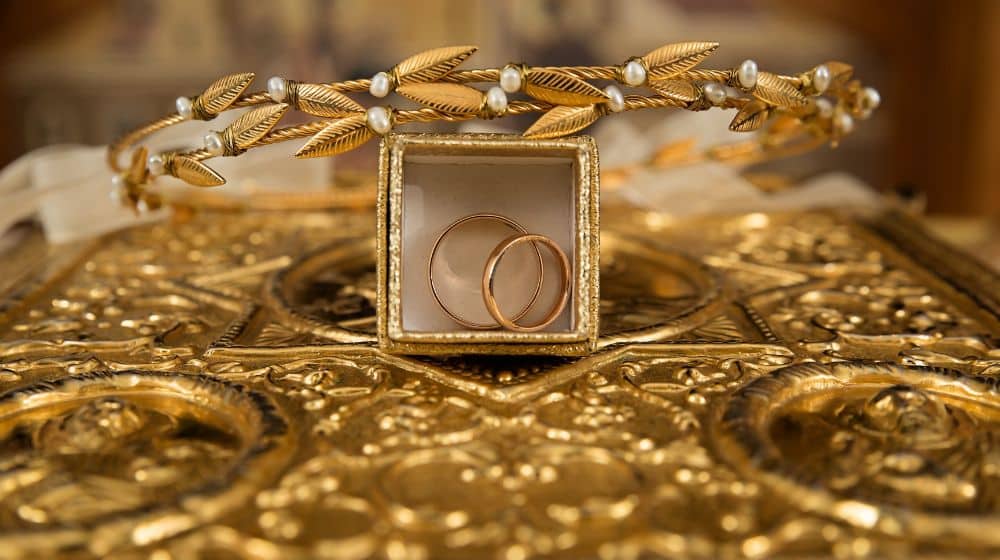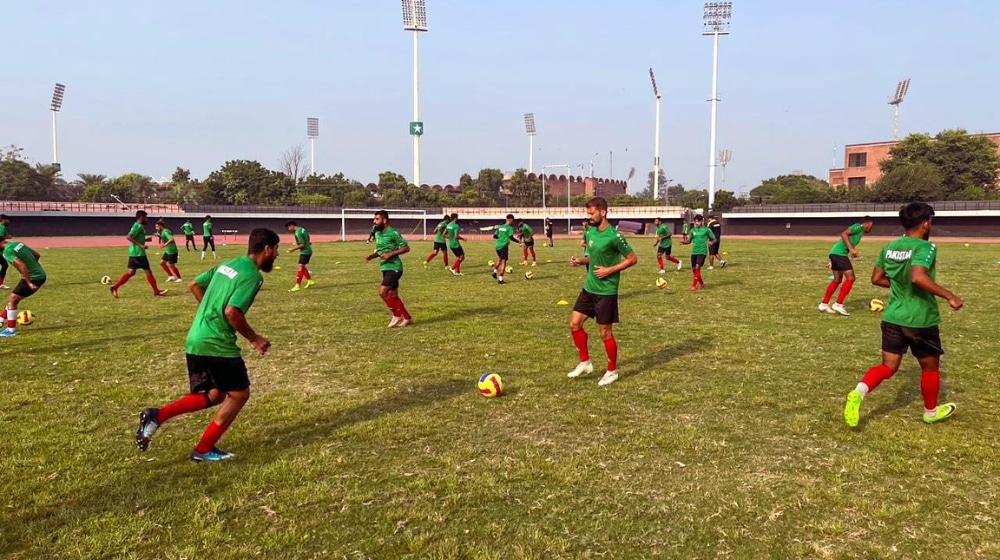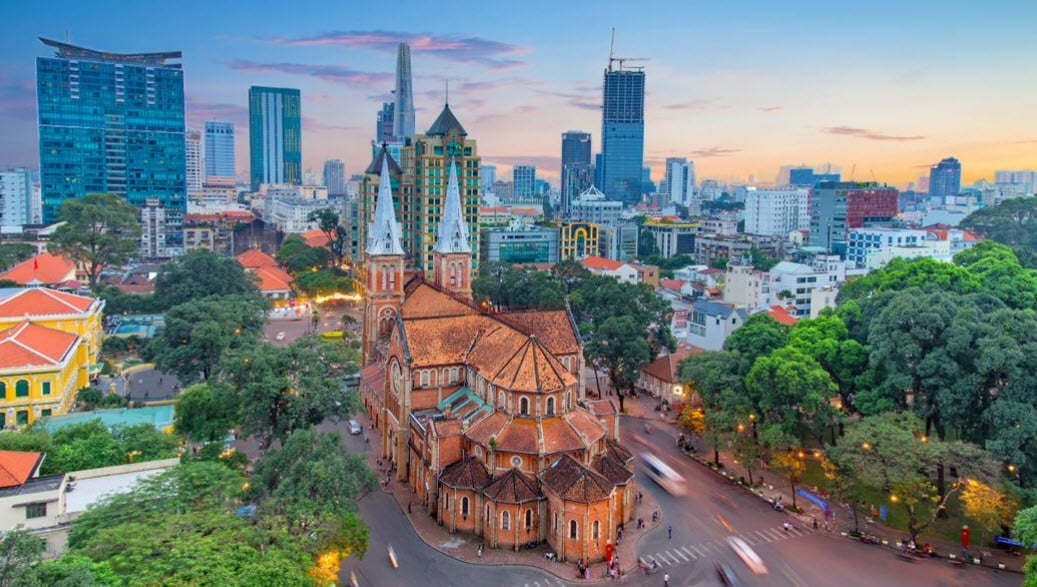
If there’s one piece of infrastructure that cinema loves to destroy, it’s the Golden Gate Bridge. The famous bridge in San Francisco collapses under Godzilla’s attack in Godzilla (2014), is swept away by a tsunami in San Andreas (2015), and is torn in half in X-Men: The Last Stand (2006) when a mutant lifts it to access Alcatraz.
Built between 1933 and 1937, the Golden Gate Bridge stretches 2.7 km long and rises 227 meters high. But above all, it’s a strategic structure for the San Francisco Bay Area. According to the Golden Gate Bridge Highway & Transportation District, 112,000 vehicles cross it every day, and in 2024, tolls alone generated $154.3 million.
A unique piece of engineering marvel—and a global icon—visited by 10 million people annually. Tourism in the Golden Gate Recreation Area contributes $1.5 billion a year to California’s economy.
Its beauty and recognizability have made it not only one of the most famous bridges in the world, but also a favorite of filmmakers, who often use it as a symbol of catastrophe and rebirth.

A week of supervised fasting temporarily reshaped the gut microbiome of people with type 1 diabetes, making it resemble that of healthy individuals, and improving cholesterol and weight without causing dangerous side effects.
Study: Fasting elicits gut microbiome signature changes that extend to type 1 diabetes patients. Image credit: EchelonIMG/Shutterstock.com
Type 1 diabetes (T1D) is a chronic disease that affects nine million people worldwide. It is marked by a deficiency of the glucose-lowering hormone insulin, produced in the pancreatic beta cells. A new report in Frontiers in Endocrinology tested the role of prolonged therapeutic fasting as a complementary treatment for T1D.
T1D is managed with lifelong insulin therapy to replace beta-cell function, coupled with careful dietary management. These patients are at high risk for multiple other medical conditions, including cardiovascular disease.
T1D is a complex disease with underlying genetic and environmental factors. It has become more common in Western societies over the last three decades, suggesting the enhanced role of environmental factors in its causation. In these patients, the gut microbiome shows differences in composition and function compared to healthy controls, both before and after the onset of the disease.
Apart from the increased gut permeability in T1D, these differences could be due to the shared risk factors for autoimmune diseases (such as T1D) and gut dysbiosis. These include the mode of birth, diet, infections, antibiotic exposure, and mental stress.
All these factors cause a loss of beneficial gut bacteria and their metabolites. For instance, metabolites like short-chain fatty acids (SCFA) and immunomodulatory metabolites contribute to gut health by maintaining the balance of regulatory T cells and pro-inflammatory Th17 cells. They also preserve the integrity of the gut’s epithelial barrier, keeping toxins and pathogens out of the body and the blood.
Such negative interactions in early life may predispose to colonization by pathogens, leading to intestinal inflammation. Other gut microbes may trigger autoimmunity by expressing antigenic sites closely resembling self-antigens, known as “molecular mimicry”. For example, Parabacteroides distasonis contains a sequence similar to an important insulin epitope. Its presence is associated with higher rates of T1D development in mice and children.
Besides insulin, approaches to managing T1D focus on slowing down beta cell destruction with immunomodulators and biologicals. These are costly, with significant side effects, and are required lifelong, like insulin.
Therapeutic fasting is a nutritional approach that improves the symptoms of multiple autoimmune diseases and alters the gut microbiome profile in healthy individuals. The question in this study was whether such changes also occur in T1D patients. Studies on fasting, including the month-long Ramadan fast observed by Muslims or a seven-day supervised fast, have shown their safety in selected T1D patients at least. Restricting metabolic fuel can rapidly weaken the autoimmune response, lending biological plausibility to this hypothesis.
In mouse models, repeated fasting cycles reduce the risk of autoimmunity and enhance beta cell regeneration and Treg proliferation. Fasting also affects the gut microbiome in mouse studies. For instance, it leads to the production of β-hydroxybutyrate, an important fuel molecule during fasting. This depletes Bifidobacteria, reducing intestinal Th17 activity.
Several species experience fasting-related shifts in abundance. It is possible that restricting dietary nutrients promotes the proliferation of gut microbes with a more diverse metabolic portfolio, enabling them to switch to host-derived nutrients.
The current pilot study included 19 T1D patients and ten controls, primarily female. The mean body mass index (BMI) was 27.7 kg/m2 and 26.2 kg/m2, respectively.
Prolonged fasting periods acutely changed the gut microbiome’s structure and composition in T1D patients, leveling it with that in controls. Immediately after the end of the fasting period, the gut microbiome closely resembled that of non-diabetic controls, but no long-term shift was established. Diabetic ketoacidosis did not occur with fasting in the T1D group.
Several fiber-associated Lachnospiraceae decreased, while mucin/glycosaminoglycan-degrading Lachnospiraceae and some Oscillospiraceae increased during fasting. These are among the largest producers of the SCFA butyrate, thriving on a fiber-rich diet, and typically break down fiber. As a result, these members may not thrive in fiber-deficient periods, as during fasting periods.
The fasting regimen in this study involved ~200 kcal/day of juices and broth, which provided very little dietary fiber. This could help explain why fiber-adapted taxa declined while mucin-degrading taxa thrived.
However, not all members of these families change the same way. Other taxa that break down mucin and glycosaminoglycans increase in response to fasting, as reported in different studies. This indicates a shift towards using host-derived energy sources, including β-hydroxybutyrate.
These taxonomic changes were correlated with fasting-related alterations in blood pressure and cholesterol levels. Both the BMI and the ratio of bad-to-good cholesterol (low-density lipoprotein, LDL, and high-density lipoprotein, HDL, respectively) improved during the fasting period and follow-up. This change was similar to that reported earlier in non-diabetic patients.
In controls, post-fast patterns mirrored those in T1D but did not reach statistical significance, likely due to the small sample size.
When compared with a small group of ten multiple sclerosis patients on repeated prolonged fasting, many areas of the gut microbiome picture showed overlaps, as did autoimmunity-free groups.
This suggests that fasting’s effects on the microbiome are independent of the host’s health status and the type of disease, though larger studies are needed to confirm this. The gut microbiome responds to fasting in a conserved manner, probably because the gut microbes are forced to use diverse metabolic pathways to utilize host-derived nutrients.
While the taxa that break down dietary sources of energy decrease in abundance during fasting, those that can switch to using other energy substrates thrive. “This suggests that, next to utilizing β-hydroxybutyrate for their own nutrition, the gut microbiota could play an important role in augmenting host ketone production during periods of fasting.”
Specific taxa that increase during fasting may induce immune tolerance to environmental stimuli, perhaps contributing to the reduced inflammation with fasting.
The findings of this study demonstrate that “fasting under medical supervision is safe and could prove beneficial for patients with T1D.” The results suggest that the gut microbiome is shaped by nutrient availability rather than the presence of disease.
The associations with clinical outcomes emphasize the need to explore the causal connections between gut microbiome changes and the reported clinical improvements with fasting. More research is needed to understand the long-term value of fasting as an adjunctive treatment in these patients. Moreover, the speed with which microbial restoration occurs during re-feeding also needs to be explored.
Download your PDF copy now!

Kelly Clarkson’s ex-husband Brandon Blackstock’s family and closest friends have reportedly come together in Montana to honor his life days after he lost a three-year battle with cancer
As per the latest findings of US Weekly, “Brandon’s closest friends and family gathered over the weekend for a few days to celebrate his life in the place he loved most. It was very private.”
The source even the outlet, “His partner, Brittney [Marie Jones], his family and his closest friends spent time at his home sharing memories of Brandon and remembering how much he meant to them.”
The insider added, “It was sad and there were tears, but there were also a lot of laughs remembering Brandon’s pranks and sense of humor.”
“Spending time in Montana walking and hiking the roads Brandon loved so much, and gathering at his home to remember him, was very special for everyone,” the source continued.
This tribute comes after Brandon, the ex-husband of Kelly Clarkson, was officially confirmed to have passed away after battling cancer for three years.
Records released on Wednesday, August 13, by the Butte-Silver Bow County Clerk and Recorder’s office in Butte, Montana, showed that the talent manager died at his home at 11:13 a.m. on August 7 at the age of 48.
Additionally, seizures were listed as “significant conditions contributing to death but not resulting in the underlying cause.”

Rhodococcus equi, previously known as Corynebacterium equi, is a gram-positive, aerobic, intracellular, nonmotile, and weakly acid-fast coccobacillus that belongs to the genus Rhodococcus within the Nocardiaceae family.1 R. equi, an emerging zoonotic pathogen, was first reported in 1967 as a human pathogen.2 It mainly presents with pulmonary diseases, such as necrotizing pneumonia and lung abscesses,3 but can also involve extrapulmonary organs, such as brain abscesses.4 R. equi can cause rare, potentially fatal diseases, predominantly affecting patients who are immunocompromised5 and has been reported in patients with competent immune systems as well.6
Nocardia spp. are aerobic, branched, gram-positive bacteria with partial acid tolerance that are frequently isolated from soil and typically cause opportunistic infections in immunocompromised hosts. However, multiple case reports have demonstrated that Nocardia spp. cause various forms of disease in immunocompetent patients as well, such as pulmonary,7 lymphocutaneous,8 pyomyositis,9 and brain abscesses.10 Thirteen species of Nocardia, including Nocardia abscessus, Nocardia farcinica, Nocardia brasiliensis, Nocardia asteroids, and Nocardia otitidiscaviarum are the most common causes of human infections.11
Here, a coinfection of R. equi and N. abscessus is described in a Chinese man who presented immunocompetence as well as the treatment therapy used. This report is rare of its kind.
A 52-year-old man was presented to our hospital due to trauma with pain and swelling of the right hand and that symptoms got worse over the past 10 days. The patient accidentally injured his hand using a hydraulic press at work 10 days ago. He experienced sharp pain, and a small amount of hydraulic oil was squeezed from his right palm. Without any special treatment, the skin of the right palm was swollen with acute pain, and active flexion and extension of his fingers were limited. When the patient arrived, physical examination and medical history examination were performed, with no history of hypertension, diabetes mellitus, food and drug allergies, and the abdomen was soft. The patient’s temperature was 37.2°C. A sinus was observed between the 4th and 5th metacarpal bones of the right palm, and the skin of the right hand showed obvious swelling with a high temperature. Pressure pain around the sinus opening was apparent, the 3–5 fingers of the right hand were limited in active flexion and extension due to pain, and the distal end of the affected limb had good peripheral blood flow but was slightly numb (Figure 1A).
|
Figure 1 (A) A sinus was observed between the 4th and 5th metacarpal bones of the right palm. (B) Imaging examination. Ultrasound scanning of the dorsolateral aspect of the right hand showed an uneven echogenic area of about 3.5 cm × 1.3 cm × 0.9 cm in the deep surface of the extensor muscles between the 4th and 5th metacarpals.
|
Abnormal elevation of white blood cell (WBC) count (15.73×109 cells/L) with 78% neutrophils and C-reactive protein (CRP) (52.78 mg/L) was indicated by blood routine examination. The clinical and laboratory findings are summarized in Table 1.
 |
Table 1 Clinical and Laboratory Variables of the Patient
|
Ultrasound scanning of the dorsolateral aspect of the right hand showed an uneven echogenic area of about 3.5 cm × 1.3 cm × 0.9 cm in the deep surface of the extensor muscles between the 4th and 5th metacarpals, with blurred borders, speckles of strong echoes and small patches of fluid echoes and the pressurized probe could be flowed, indicating that it was abscess (Figure 1B).
The patient underwent right hand debridement and negative pressure suction under brachial plexus anesthesia. A longitudinal incision was made between the 4th and 5th metacarpals on the back of the right hand, and the skin and subcutaneous tissues were incised sequentially. A large amount of purulent discharge and necrotic tissue was detected, and the interosseous muscles were involved. The dorsal purulent secretion and necrotic tissue were completely removed. A serrated incision was made between the 4th and 5th metacarpal bones of the right palm, and the skin and subcutaneous tissue were incised sequentially. A large amount of purulent discharge and necrotic tissue was detected, and the tendon sheath of the flexor tendon of the ring finger was involved. Thoroughly remove the purulent and necrotic tissue on the palmar side. Repeatedly flush the wound with large amounts of saline and dilute iodophor, thoroughly stop bleeding and then cover the wound with VAC dressing, external negative pressure suction and sterile dressing. Bacterial cultures of the purulent discharge and necrotic tissue were performed.
Specimens were handled and identified according to standard laboratory protocols. After the pus and necrotic tissues were cultured on the Columbia blood agar plate (BAP) at 37°C for 3 days under aerobic conditions, two different forms of colonies could be seen (Figure 2A). Gram staining and acid-fast staining were performed on the creamy white, irregular, and wrinkled colonies, and the observation under the oil microscope showed that it was gram-positive rod and partially acid-fast, suggesting that it was likely to belong to Nocardia spp. (Figure 2B and C). The other yellowish and mucoid colonies were characterized as gram-positive cocci or coccobacillus (Figure 2D). The two forms of colonies were identified by Matrix-assisted laser desorption ionization-time-of-flight mass spectrometry (MALDI-TOF MS) (Zybio, China) as Nocardia abscessus with a reliable score value of 2.26 (Figure 2E) and as Rhodococcus equi with a reliable score value of 2.08 (Figure 2F). The germ identification results were confirmed by 16S rRNA gene sequencing (Tsingke Co., Ltd., Beijing, China).
 |
Figure 2 Pathogenic examination. (A) Two different forms of colonies were observed by culture on the blood plate. (B) The creamy white, irregular colonies indicated by the green arrow in Figure 2A showed gram-positive rod-shaped bacterium under oil mirror (×1000 magnification). (C) Acid fast staining showed weak positive mycelia, which proved that it was probably Nocardia spp. (D) The yellowish, mucoid colonies indicated by the red arrow in Figure 2A showed gram-positive cocci or coccobacillus bacterium under oil mirror (×1000 magnification). (E) Matrix-assisted laser desorption ionization-time-of-flight mass spectrometry (MALDI-TOF MS) confirm the colony indicated by the green arrow in Figure 2A was Nocardia abscessus. (F) Matrix-assisted laser desorption ionization-time-of-flight mass spectrometry (MALDI-TOF MS) confirm the colony indicated by the red arrow in Figure 2A was Rhodococcus equi.
|
The minimal inhibitory concentration (MIC) of the isolated N. abscessus strain against amikacin, cefotaxime, and ceftriaxone was used in the Epsilometer test (E-test) method, and the maximum zone of inhibition against amoxicillin-clavulanic acid, trimethoprim/sulfamethoxazole and minocycline were performed by Kirby–Bauer method (KB). Antibiotic susceptibility results of the N. abscessus were judged by the Clinical and Laboratory Standards Institute (CLSI) interpretive breakpoints. The isolated strain N. abscessus was sensitive to amikacin (Table 2). R. equi is a rare bacterium that lacks a standardized drug-sensitive breakpoint. Therefore, no antimicrobial susceptibility testing was performed.
 |
Table 2 Antimicrobial Susceptibility of the Nocardia abscessus by Kirby–Bauer Method and Epsilometer Test
|
When the patient arrived at our hospital, he was treated empirically with piperacillin/tazobactam sodium to prevent infection. Antibiotic use was adjusted after 4 days based on secretion culture results and antibiotic sensitivity, piperacillin/tazobactam sodium was discontinued, and levofloxacin (300 mg/day) and sulfamethoxazole (2 tablets q12h) were initiated. Approximately two weeks after the initiation of this treatment regimen, the patient’s clinical symptoms improved significantly. The patient was discharged for oral sulfamethoxazole therapy and routine follow-up. Two weeks after discharge, the patient completed the medication regimen and was stable at outpatient follow-up with no evidence of infection.
Rhodococcus and Nocardia spp. are aerobic, gram-positive bacteria that are found globally in soil, dust, and marine sediments. They usually manifest as opportunistic infections in immunocompromised hosts, especially those infected with HIV.1 Our patient was deemed immunocompetent after a workup including HIV screening as well as testing for immunoglobulins and complement resulted as normal. The case presented here is the first report describing a rare R. equi and N. abscessus coinfection in a patient with normal immune system in China.
In humans, R. equi primarily invades the lungs, causing pneumonia and suppurative lesions. In addition, R. equi can also occur in extrapulmonary organs, such as the kidneys and brain, resulting in bronchitis, meningitis, bacteremia, and other diseases.12 It is acquired through inhalation, ingestion, or inoculation of wounds.13 Currently, there is no standardized drug-sensitive breakpoint for R. equi. Because R. equi resides in cells, at least one antibiotic with good intracellular penetration is recommended.5 Rifampin, imipenem, vancomycin, ciprofloxacin, and erythromycin exhibit good antibiotic activity against R. equi.14
An increasing number of infections are caused by Nocardia spp., but infections caused by N. abscessus are rare in humans. N. abscessus, previously known as Nocardia asteroides type 1, was first classified in 2000.15 Nocardia cyriacigeorgica and Nocardia farcinica are considered the main pathogenic species worldwide, while in China, Nocardia asteroides is commonly found.16 Nocardia is typically found in the environment, especially in the soil, decaying plants, and standing water. Nocardia can enter the human body through the respiratory tract or skin wounds, causing local infections and spreading to other organs through blood circulation.17,18 Our patient was likely exposed to a high burden of bacteria after injuring his hand by a hydraulic press, while a large number of bacteria entered the wound along with the hydraulic oil. Direct inoculation being is the source of bacteria entry. It is important to tailor the antibiotic therapy by identifying the species level of Nocardia, as the resistance profile can differ significantly across strains. Nocardia can be identified accurately using MALDI-TOF MS or 16S rRNA sequencing.19,20 MALDI-TOF MS is more commonly used than 16S rRNA sequencing because of its short time and ease of use. In this case, filamentous shapes were observed on gram staining and partially positive on modified acid-fast staining, which aided in the identification of Nocardia. Eventually, Nocardia species were identified accurately using MALDI-TOF MS. The results were confirmed using 16S rRNA gene sequencing. N. abscessus is generally susceptible to multiple antibiotics, including trimethoprim/sulfamethoxazole, ceftriaxone, amikacin, amoxicillin-clavulanic acid, and tigecycline. It demonstrates variable susceptibility to imipenem, minocycline, ciprofloxacin, moxifloxacin, and clarithromycin/azithromycin.21
The patient was treated with levofloxacin, which has excellent intracellular penetration, and sulfamethoxazole, which ultimately proved to be effective. The patient showed good results and recovered from the disease.
In conclusion, this is the first report of R. equi and N. abscessus coinfection in a patient with normal immune system in China. The R. equi and N. abscessus isolates were successfully identified by MALDI-TOF MS, which provided a new option for the identification of R. equi and Nocardia. After timely and appropriate anti-infection treatment, the patient’s condition improved and was discharged. This case shows that precise species identity provides a critical guide for physicians in the choice of targeted treatment.
This case report was approved by the ethical review committee of Liaocheng Second People’s Hospital. The patient’s written informed consent was obtained for publications of all the images and case details. No institutional approval was required to publish the case details.
All authors made a significant contribution to the work reported, whether that is in the conception, study design, execution, acquisition of data, analysis and interpretation, or in all these areas; took part in drafting, revising or critically reviewing the article; gave final approval of the version to be published; have agreed on the journal to which the article has been submitted; and agree to be accountable for all aspects of the work.
No financial support was received for this article.
The authors declare no conflicts of interest in this work.
1. Garrity GM. Conservation of Rhodococcus equi (magnusson 1923) goodfellow and alderson 1977 and rejection of Corynebacterium hoagii (morse 1912) eberson 1918. Int J Systematic Evolutionary Microbiol. 2014;64(Pt_1):311–312. doi:10.1099/ijs.0.059741-0
2. Golub B, Falk G, Spink WW. Lung abscess due to Corynebacterium equi: report of first human infection. Ann Intern Med. 1967;66(6):1174–1177. doi:10.7326/0003-4819-66-6-1174
3. Stewart A, Sowden D, Caffery M, et al. Rhodococcus equi infection: a diverse spectrum of disease. IDCases. 2019;15:e00487. doi:10.1016/j.idcr.2019.e00487
4. Babar Z, Nasim A, Dodani SK, et al. Successful treatment and long-term follow-up of a Rhodococcus equi brain abscess in a renal transplant recipient. Saudi J Kidney Dist. 2023;34(4):365–370. doi:10.4103/1319-2442.395453
5. Yamshchikov A, Schuetz A, Lyon GM. Rhodococcus equi infection. Lancet Infect Dis. 2010;10(5):350–359. doi:10.1016/S1473-3099(10)70068-2
6. Dias M, Bhat P, Chandrakar S, et al. Rhodococcus equi: a pathogen in immunocompetent patients. J Fam Med Prim Care. 2013;2(3):291–293. doi:10.4103/2249-4863.120770
7. Pan W, Zhuo B, Wang S, et al. First report of Nocardia wallacei infection in an immunocompetent patient in Zhejiang province. Open Life Sci. 2024;19(1):20220891. doi:10.1515/biol-2022-0891
8. Dumic I, Brown A, Magee K, et al. Primary lymphocutaneous Nocardia brasiliensis in an immunocompetent host: case report and literature review. Medicina. 2022;58(4):488. doi:10.3390/medicina58040488
9. Rehman AO, Ayoola V, Christine A, et al. Nocardia brasiliensis pyomyositis in an immunocompetent patient following gardening activity. J Investigative Med High Impact Case Reports. 2024;12. doi:10.1177/23247096241261508
10. Einstein EH, Bonda D, Khan S, et al. Multiple brain abscesses due to Nocardia otitidiscaviarum: case report and treatment implications. Cureus. 2021. doi:10.7759/cureus.14362
11. Wang D, Hu MT, Liu WJ, Zhao Y, Xu YC. Bacteremia caused by Nocardia farcinica: a case report and literature review. BMC Infect Dis. 2024;24(1):381. doi:10.1186/s12879-024-09230-2
12. Lin W, Kruse RL, Yang K, et al. Diagnosis and management of pulmonary infection due to Rhodococcus equi. Clin Microbiol Infect. 2019;25(3):310–315. doi:10.1016/j.cmi.2018.04.033
13. Shah R, Klumpp LC, Nerella N, et al. Infective endocarditis caused by Rhodococcus equi in an immunocompetent patient. Cureus. 2020;12(4).
14. Salmuna Z, Azim W, Harun A. Rhodococcus equi pulmonary infection in an immunocompromised patient: case report and literature review. Clin Microbiol Newsl. 2018;40(15):128–130. doi:10.1016/j.clinmicnews.2018.07.004
15. Yassin A, Sträubler B, Schumann P, et al. Nocardia abscessus sp. nov. Int J Syst Evol Microbiol. 2000;50(4):1487–1493. doi:10.1099/00207713-50-4-1487
16. Yang J, Ren HT, Wang J, et al. Clinical characteristics, susceptibility profiles, and treatment of nocardiosis: a multicenter retrospective study in 2015-2021. Inter J Infect Dis. 2023;130:136–143. doi:10.1016/j.ijid.2023.02.023
17. Wilson JW. Nocardiosis: updates and clinical overview. Mayo Clin Proc. 2012;87(4):403–407. doi:10.1016/j.mayocp.2011.11.016
18. Budzik JM, Hosseini M, Mackinnon AC, Taxy JB. Disseminated Nocardia farcinica: literature review and fatal outcome in an immunocompetent patient. Surg Infect. 2012;13(3):163–170. doi:10.1089/sur.2011.012
19. Galar A, Martín-Rabadán P, Marín M, et al. Revisiting nocardiosis at a tertiary care institution: any change in recent years? Inter J Infect Dis. 2021;102:446–454. doi:10.1016/j.ijid.2020.10.087
20. Couble A, Rodríguez-Nava V, de Montclos MP, Boiron P, Laurent F. Direct detection of Nocardia spp. in clinical samples by a rapid molecular method. J Clin Microbiol. 2005;43(4):1921–1924. doi:10.1128/JCM.43.4.1921-1924.2005
21. Kim J, Dong H, Lee E, et al. Multiple intramuscular abscesses caused by Nocardia abscessus in a patient with chronic obstructive lung disease: clinical microbiology considerations. Korean J Med. 2024;99(1):50–56. doi:10.3904/kjm.2024.99.1.50

The price of 24 karat per tola gold witnessed a decrease of Rs. 1,400 on Wednesday and was sold at Rs. 355,200 against its sale at Rs. 356,600 on the previous trading day, All Pakistan Sarafa Gems and Jewelers Association reported.
The prices of 10 grams of 24 karat also decreased by Rs. 1,201 to Rs. 304,526 from Rs. 305,727, whereas the price of 10 grams of 22 Karat went down by Rs. 1,101 to Rs. 279,158 from Rs. 280,259.
The rates of per tola and ten-gram silver decreased by Rs. 96 and Rs. 82, and were traded at Rs. 3,935 and Rs. 3,373, respectively.
The price of gold in the international market decreased by $14 to $3,325 from $3,339, whereas silver decreased by $0.96 to $37.02 from $37.98, the Association reported.

The Pakistan Football Federation (PFF) is reportedly set to revive domestic competitions, with its flagship tournament, the National Challenge Cup, likely to get the initial nod for a window between October 15 and 30 in Multan, as the federation looks to balance the calendar amid a hectic run of international fixtures.
According to Nukta, a senior PFF official has confirmed the tentative plan, stressing the need to wrap up the competition by the end of October.
Pakistan is set to face Syria in a crucial AFC Asian Cup Qualifier at Jinnah Stadium, Islamabad, on November 18, leaving little room for delays. Before that, the men’s national team will play back-to-back qualifiers against Afghanistan on October 9 (away) and October 14 (home). With the squad fully occupied during that period, the Challenge Cup will only be possible once those matches conclude.
A circular inviting entries from all participating units is expected soon, giving departments and clubs time to mobilize their squads.
WAPDA are the current holders of the Challenge Cup after edging SA Gardens 1–0 in the 2022–23 final at Jinnah Stadium. The bigger question, however, is how many traditional departmental powerhouses—long dormant due to Pakistan’s administrative turmoil in football—will return to the fold.
Institutions such as National Bank, PIA, K‑Electric, CAA, SSGC, SNGPL, and KPT have all been urged by the Prime Minister’s office to revive their sports teams. Alongside regulars like WAPDA, KRL, and the armed forces, their participation could mark the beginning of a more vibrant domestic calendar after years of stagnation.
The Challenge Cup will also double as a talent hunt for newly appointed head coach Nolberto Solano, who is eager to identify domestic players for upcoming assignments.
Pakistan’s football has endured a decade marred by factional disputes and international suspensions. Domestic competitions were scarce, and even during the five-year tenure of the FIFA‑appointed Normalisation Committee, the game struggled for stability. The new PFF administration is hoping to remedy this situation.
The National Challenge Cup remains Pakistan’s second‑most prestigious competition after the Pakistan Premier League, which the PFF plans to relaunch later this year or early next. With the domestic structure finally showing signs of revival, October’s Challenge Cup could be a defining moment for the future of Pakistani football.

On 27 June 2025, Vietnam’s National Assembly enacted Law on Atomic Energy No. 94/2025/QH15 (“Atomic Energy Law“). It establishes a robust legal framework for the peaceful development and application of atomic energy.
The Atomic Energy Law applies to domestic and foreign organizations and individuals and international organizations engaged in atomic energy activities.
The Atomic Energy Law regulates the following key areas:
Effective from 1 January 2026, the Atomic Energy Law replaces Law on Atomic Energy No. 18/2008/QH12, strengthening nuclear governance and aligning with international standards and the guidelines of the International Atomic Energy Agency (IAEA), paving the way for upcoming projects such as Ninh Thuan’s nuclear power plants.
Click here to read the full alert
* * * * *
Hoang Anh Vu, Trainee Solicitor, has contributed to this legal update.
Oanh is a respected presenter in the areas of finance and capital markets. In addition, she has lectured at the Ho Chi Minh City Bar Association. She also serves as a legal advisor to the Capital Market Committee of Ho Chi Minh City American Chamber of Commerce.

SAVE $20: As of Aug. 20, the Fire TV Stick 4K is on sale for $29.99 at Amazon. This is 40% off its list price of $49.99.
With so many shows and films hitting streaming services, it’s important to have a high-quality streaming device to watch it all. If you’re on the hunt for something new, Amazon is offering a discount at the moment on its Fire TV Stick 4K.
Enjoy crisp 4K quality at an even lower price. The Fire TV Stick 4K is currently on sale for $29.99. This marks a 40% discount from its list price of $49.99, allowing you to save $20. It’s listed as a limited-time deal right now, so you’ll want to act fast to score it at this low price.
The Echo Show 5 is back at its lowest price this year — save $25 right now
With the 4K Fire TV Stick, you’ll be able to enjoy all of your favorite shows and films with support for 4K Ultra HD resolution. It also supports Dolby Vision, HDR10+, and Dolby Atmos audio so you can feel fully immersed with excellent picture and sound. On top of that, it also has WiFi 6 support so your streaming quality will come across smooth and clear.
Mashable Deals
This deal may not last for long, so act fast to get the 4K Fire TV Stick for just $29.99. And if you’re looking for a new TV to watch everything on, why not check out this deal on the 55-inch TCL QM6K QLED 4K TV at Amazon as well?